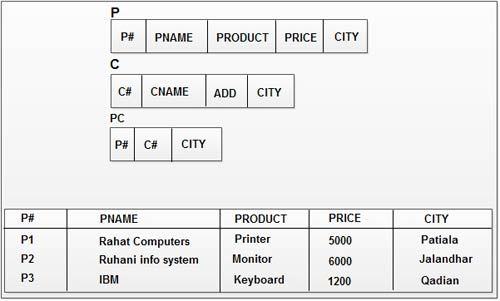Database changes over time when information is inserted or deleted. The collection of information stored in the database at a particular moment is called an instance of the database. The overall design of the database is called the database schema.
A schema diagram, as shown above, displays only names of record types (entities) and names of data items (attributes) and does not show the relationships among the various files.

The schema will remain the same while the values filled into it change from instant to instant. When the schema framework is filled in with data item values, it is referred as an instance of the schema. The data in the database at a particular moment of time is called a database state or snapshot, which is also called the current set of occurrences or instances in the database
In other words, “the description of a database is called the database schema, which is specified during database design and is not expected to change frequently”. A displayed schema is called a schema diagram.

A schema diagram displays only some aspects of a schema, such as the name of record types and data items, and some types of constraints. Other aspects are not specified in the schema diagram. It does not specify the data type of each data item and the relationships among the various files.
Sub schema
A sub schema is a subset of the schema and inherits the same property that a schema has. The plan (or scheme) for a view is often called sub schema. Sub schema refers to an application programmer’s (user’s) view of the data item types and record types, which he or she uses. It gives the users a window through which he or she can view only that part of the database, which is of interest to him. Therefore, different application programs can have different view of data.
 Dinesh Thakur holds an B.C.A, MCDBA, MCSD certifications. Dinesh authors the hugely popular
Dinesh Thakur holds an B.C.A, MCDBA, MCSD certifications. Dinesh authors the hugely popular